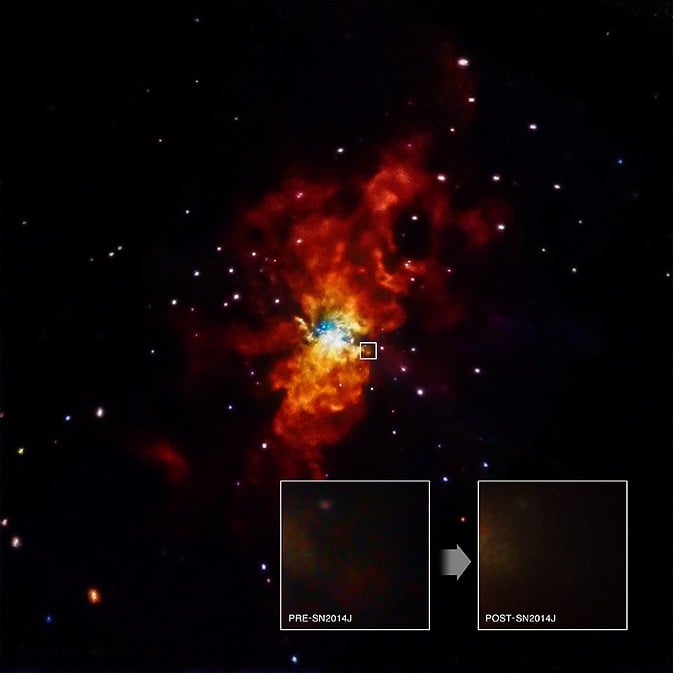X marks the spot: after probing the area where a star used to be, in X-rays, astronomers have been able to rule out one cause for the supernova explosion.
Because the Chandra X-Ray Observatory did not detect anything unusual in X-rays, astronomers say this means that a white dwarf was not responsible for pulling off material from a massive star that exploded (from Earth's vantage point) on Jan. 21, 2014,
triggering excitement from professional and amateur astronomers alike
.
"While it may sound a bit odd, we actually learned a great deal about this supernova by detecting absolutely nothing," stated study leader Raffaella Margutti of the Harvard-Smithsonian Center for Astrophysics (CfA) in Massachusetts. "Now we can essentially rule out that the explosion was caused by a white dwarf continuously pulling material from a companion star."
So what caused it? Possibly two white dwarfs merged instead. Follow-up observations will take place in Messier 88 and the source of the explosion, which was about 12 million light-years from Earth. While that's a long time by human standards, astronomers point out that is close on the cosmic distance scale.
A study on this work was recently published in The Astrophysical Journal. You can read a
preprint version of the article here
.
Source:
NASA
 Universe Today
Universe Today
